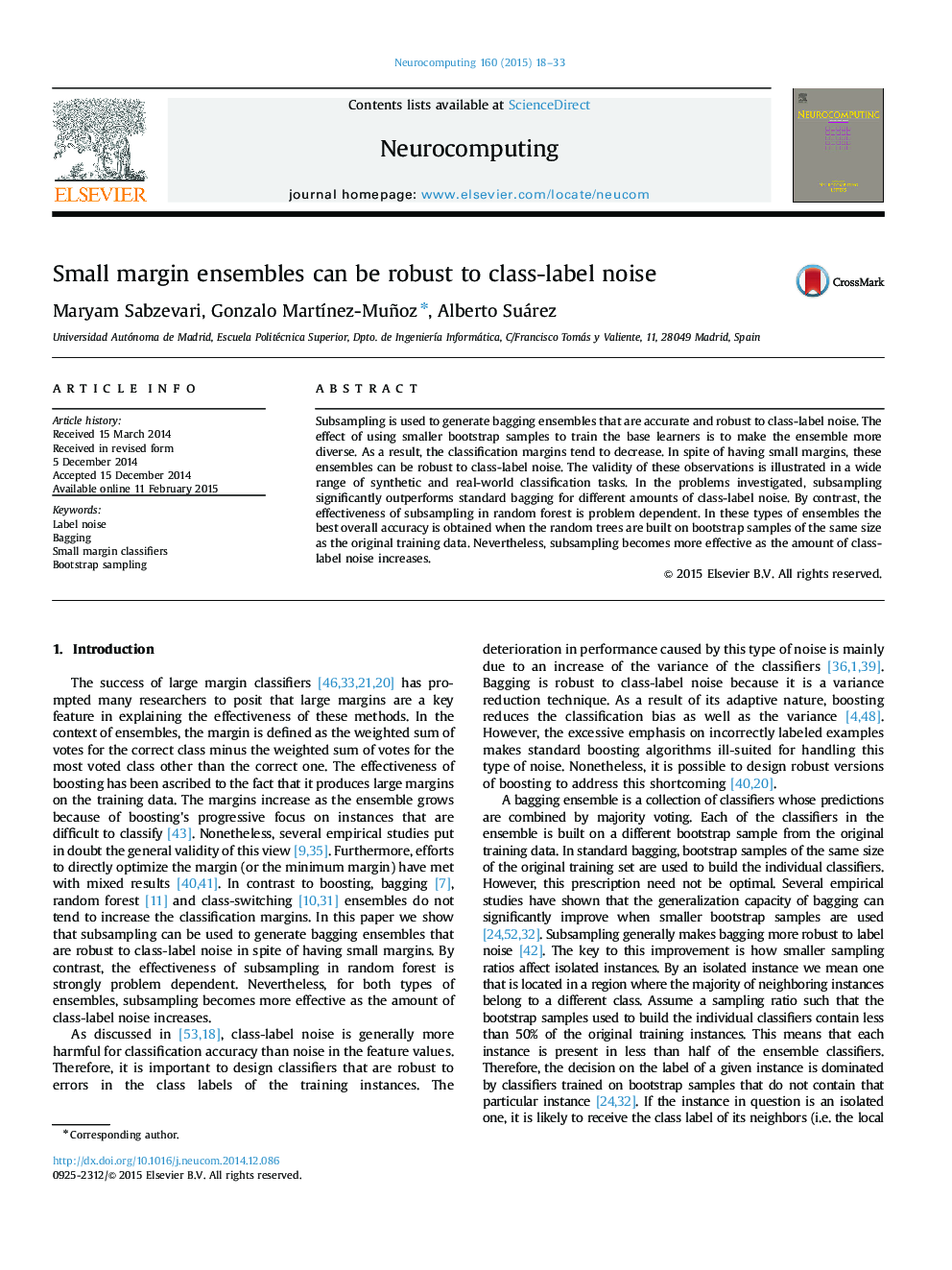| Article ID | Journal | Published Year | Pages | File Type |
|---|---|---|---|---|
| 406195 | Neurocomputing | 2015 | 16 Pages |
Subsampling is used to generate bagging ensembles that are accurate and robust to class-label noise. The effect of using smaller bootstrap samples to train the base learners is to make the ensemble more diverse. As a result, the classification margins tend to decrease. In spite of having small margins, these ensembles can be robust to class-label noise. The validity of these observations is illustrated in a wide range of synthetic and real-world classification tasks. In the problems investigated, subsampling significantly outperforms standard bagging for different amounts of class-label noise. By contrast, the effectiveness of subsampling in random forest is problem dependent. In these types of ensembles the best overall accuracy is obtained when the random trees are built on bootstrap samples of the same size as the original training data. Nevertheless, subsampling becomes more effective as the amount of class-label noise increases.
